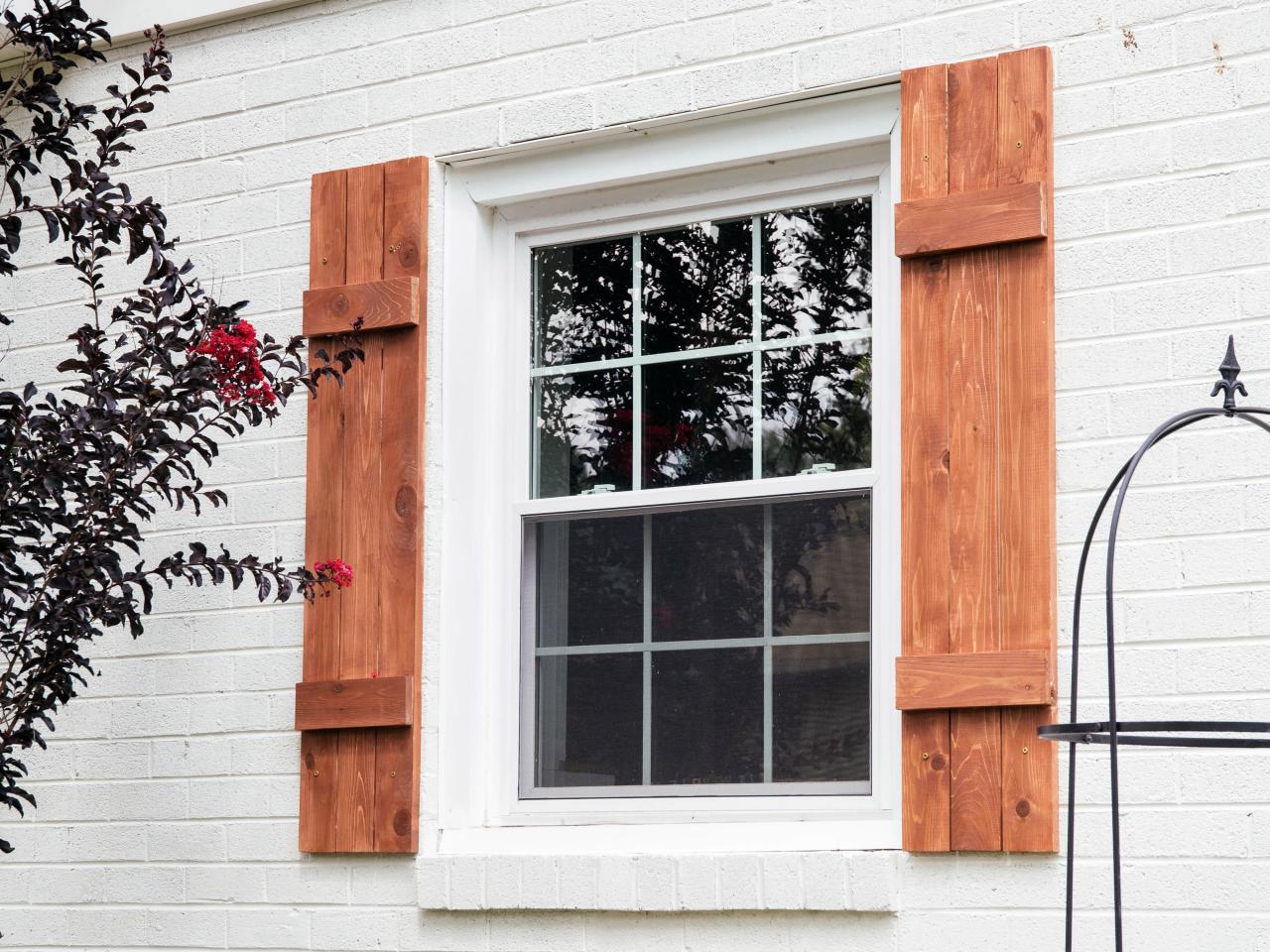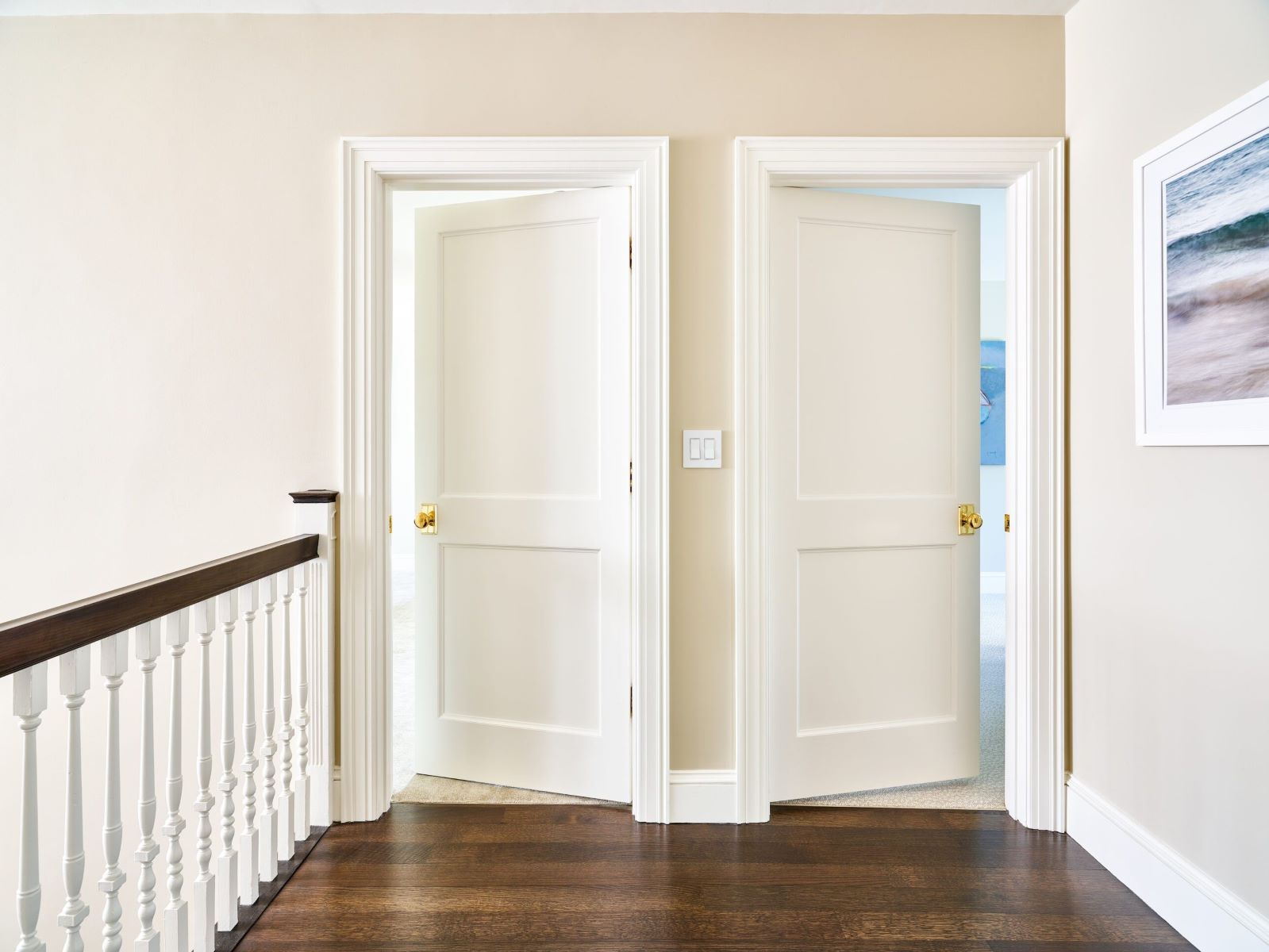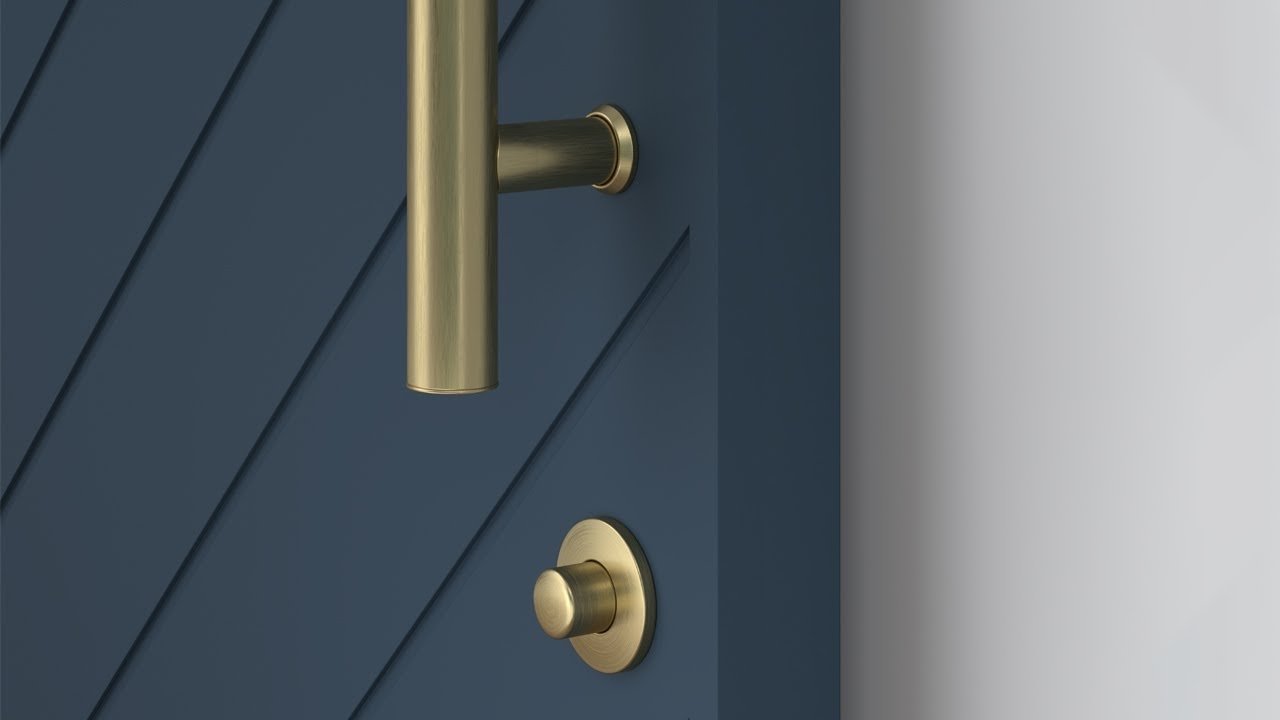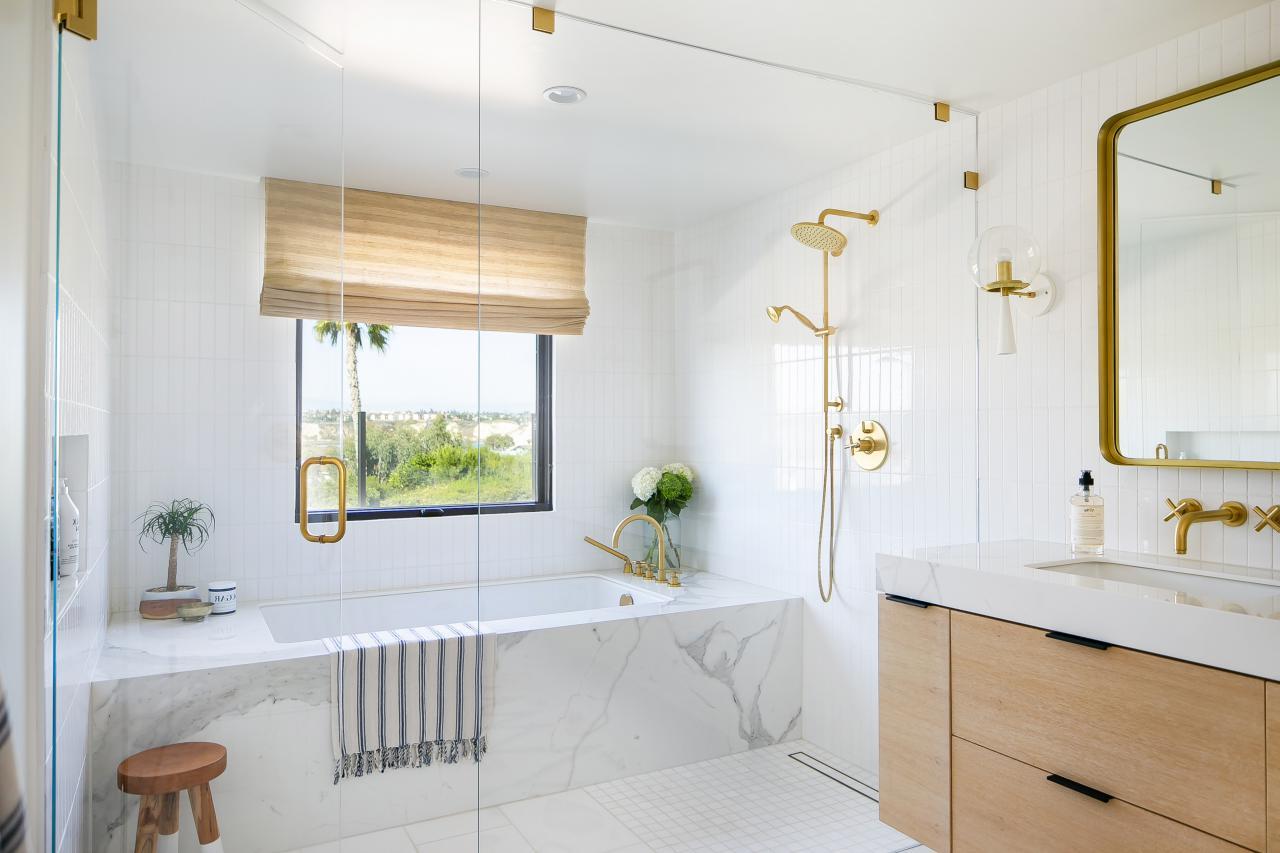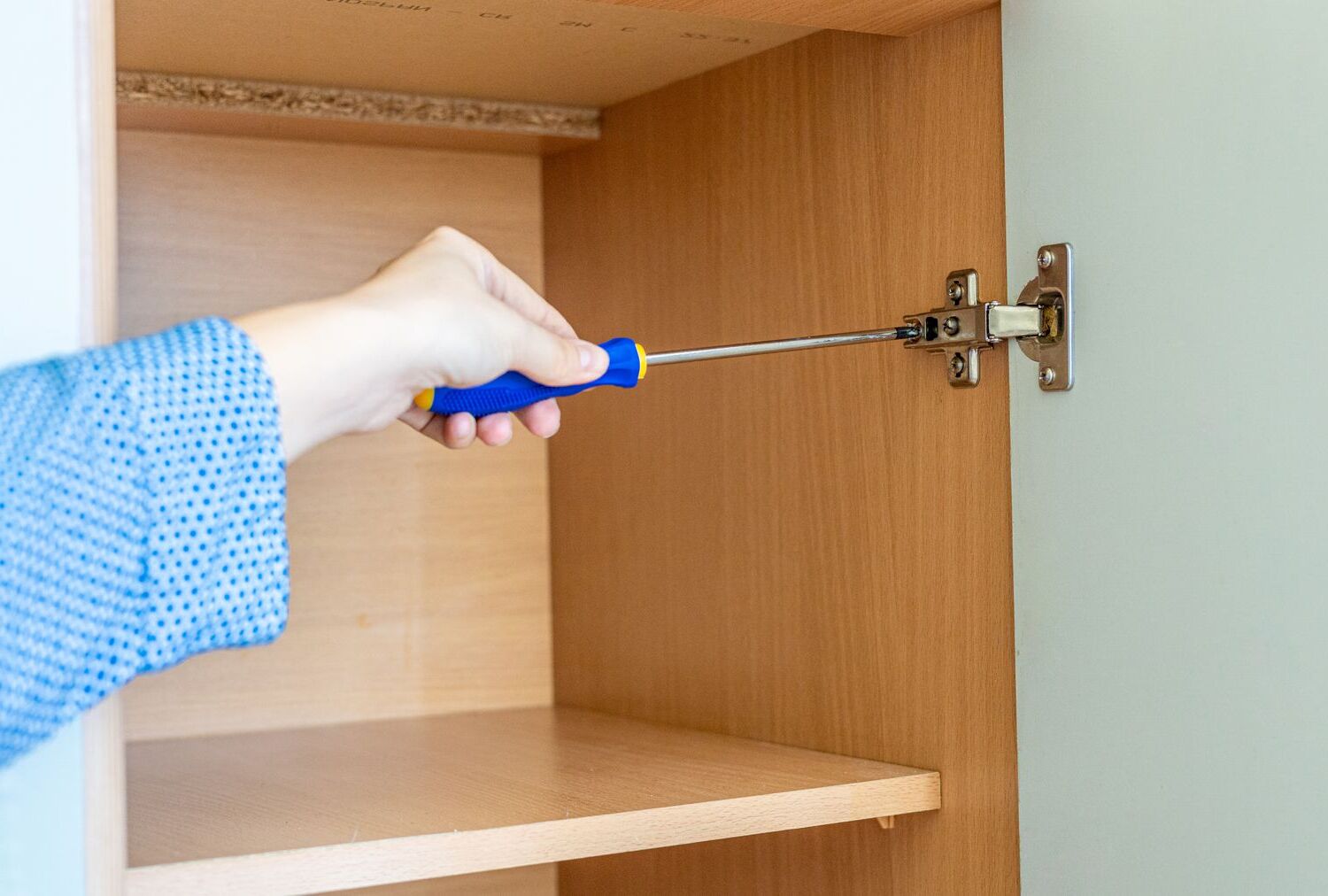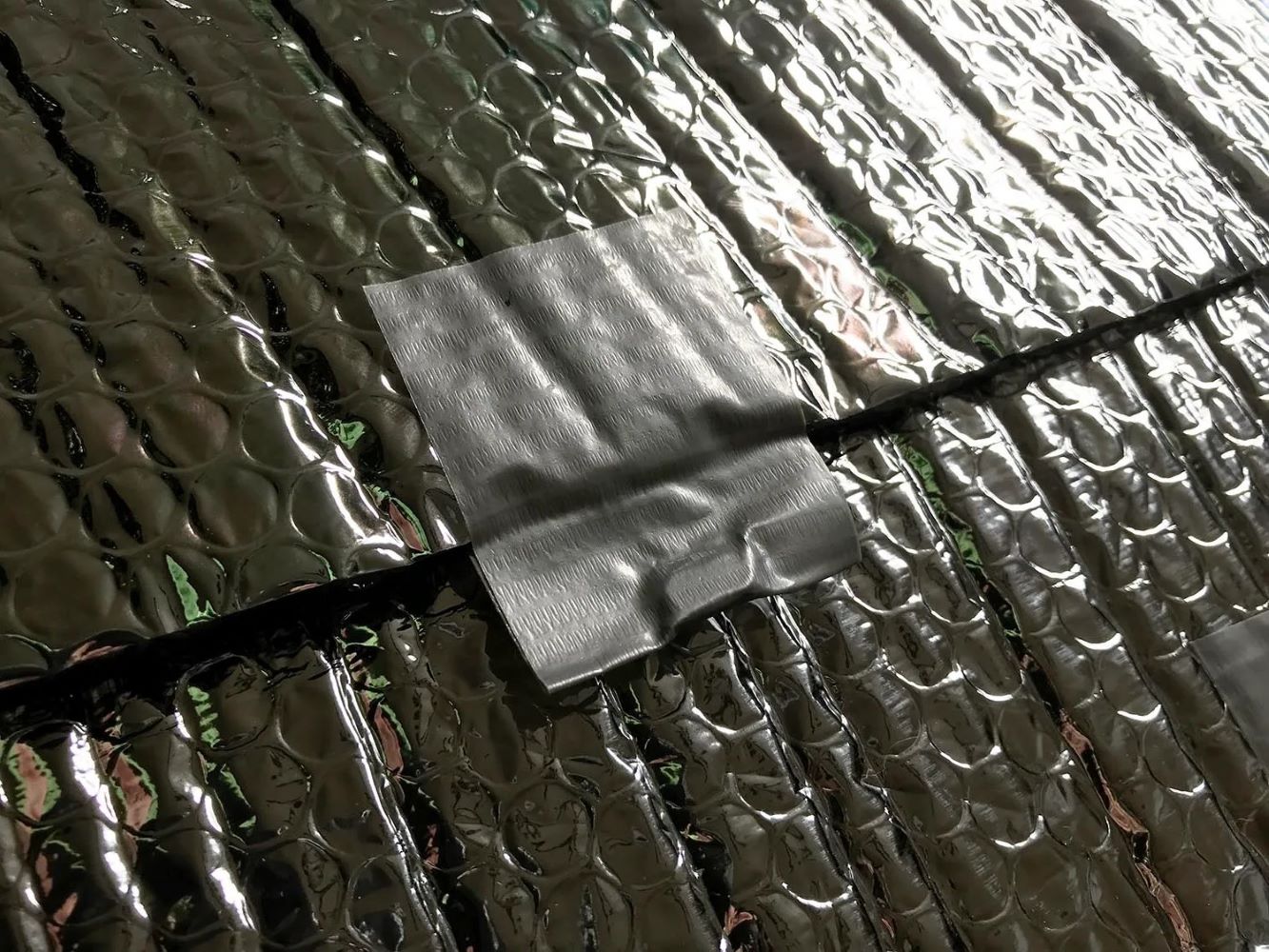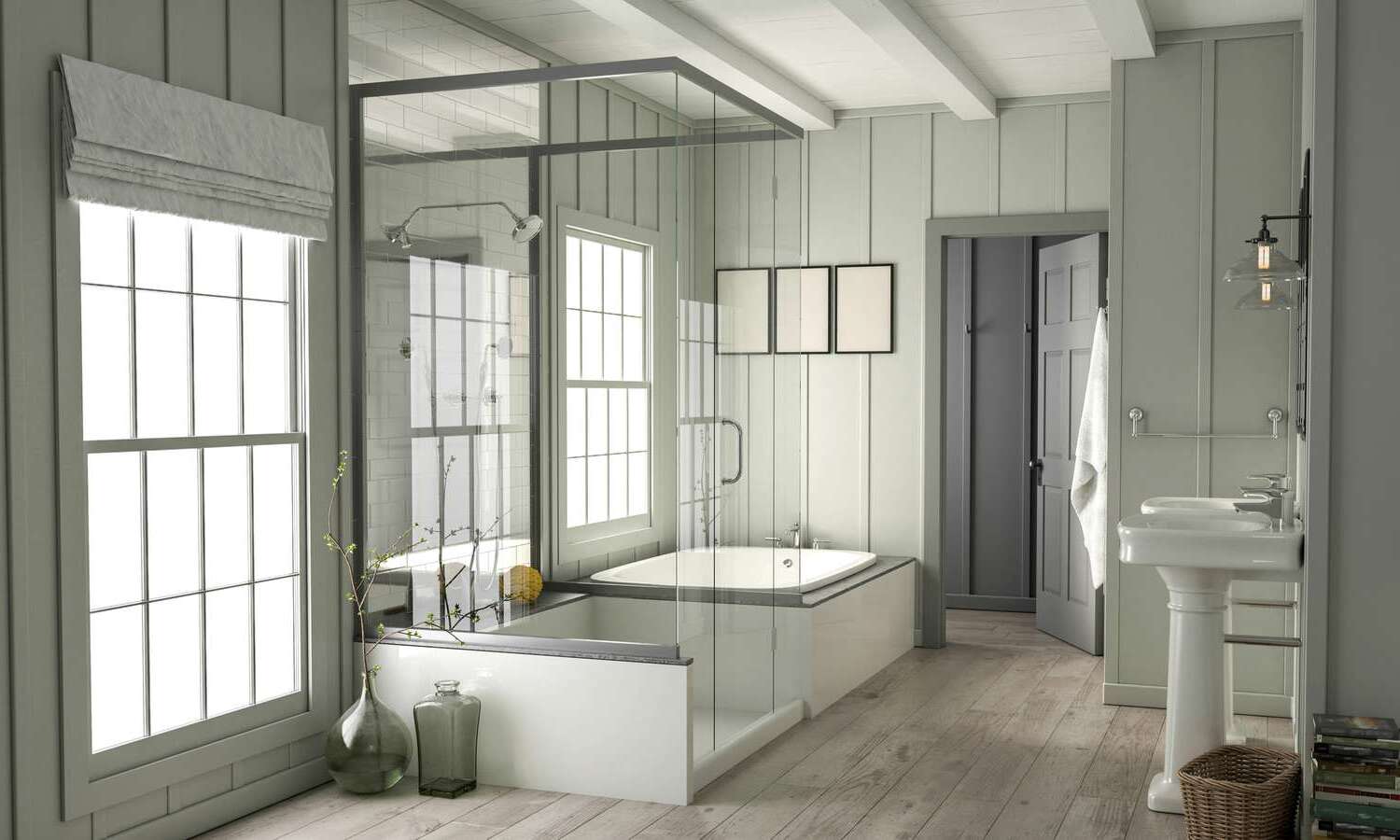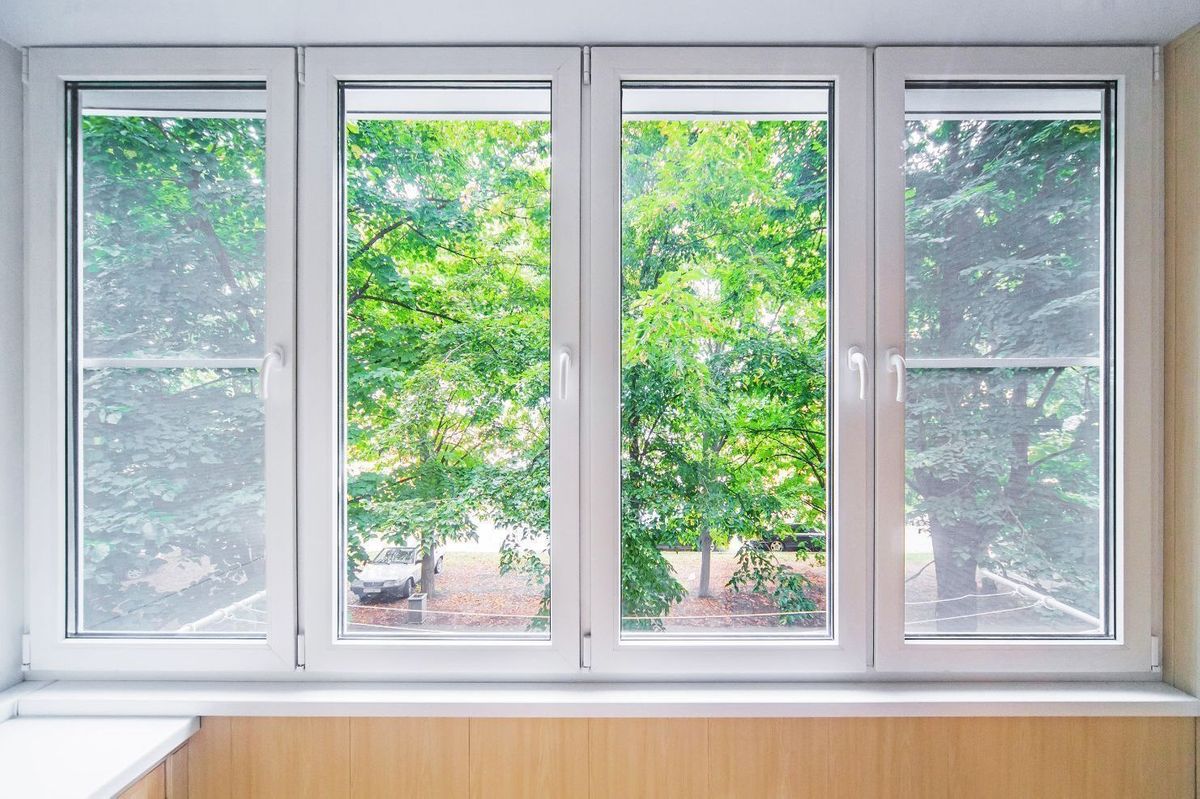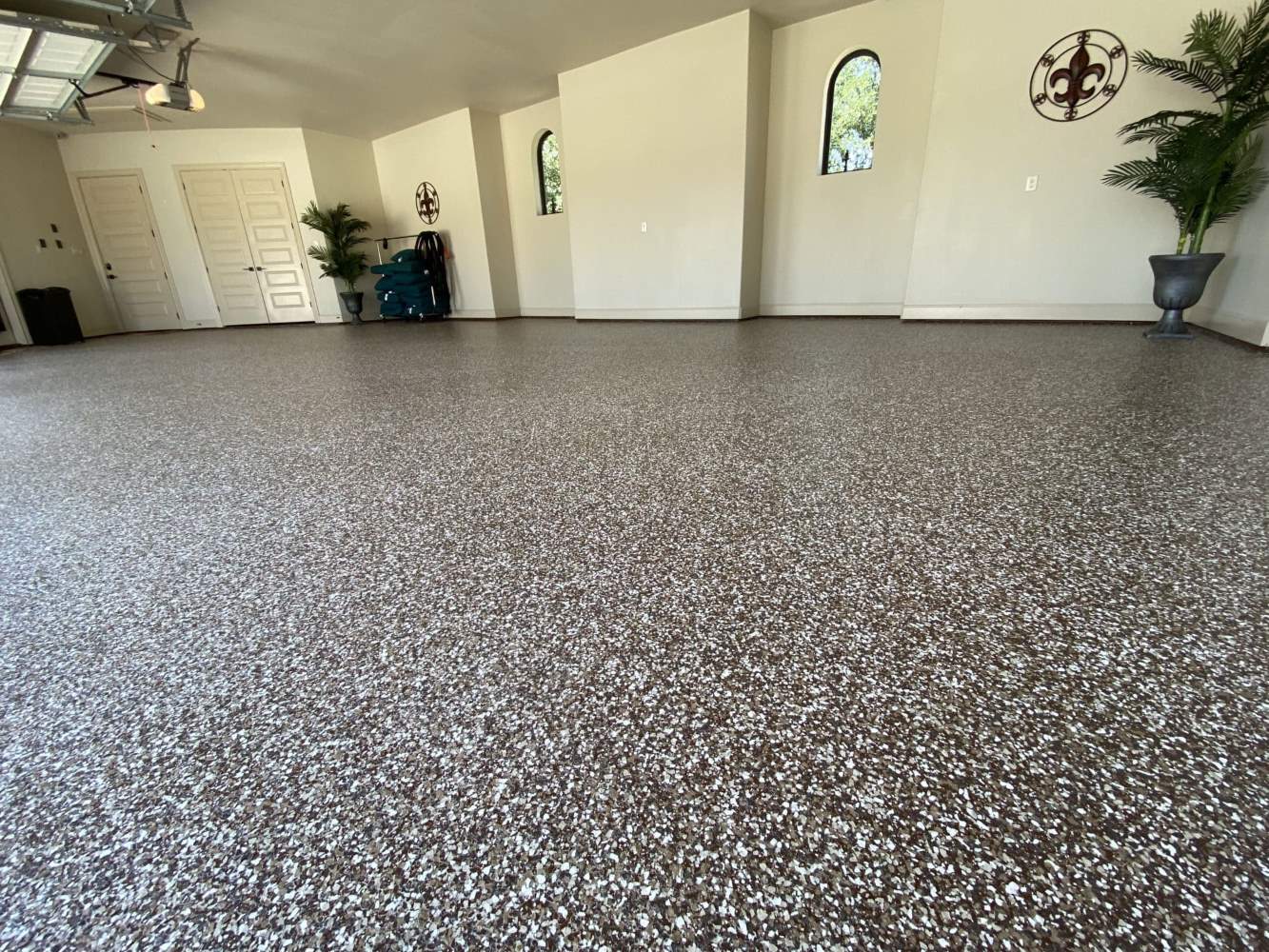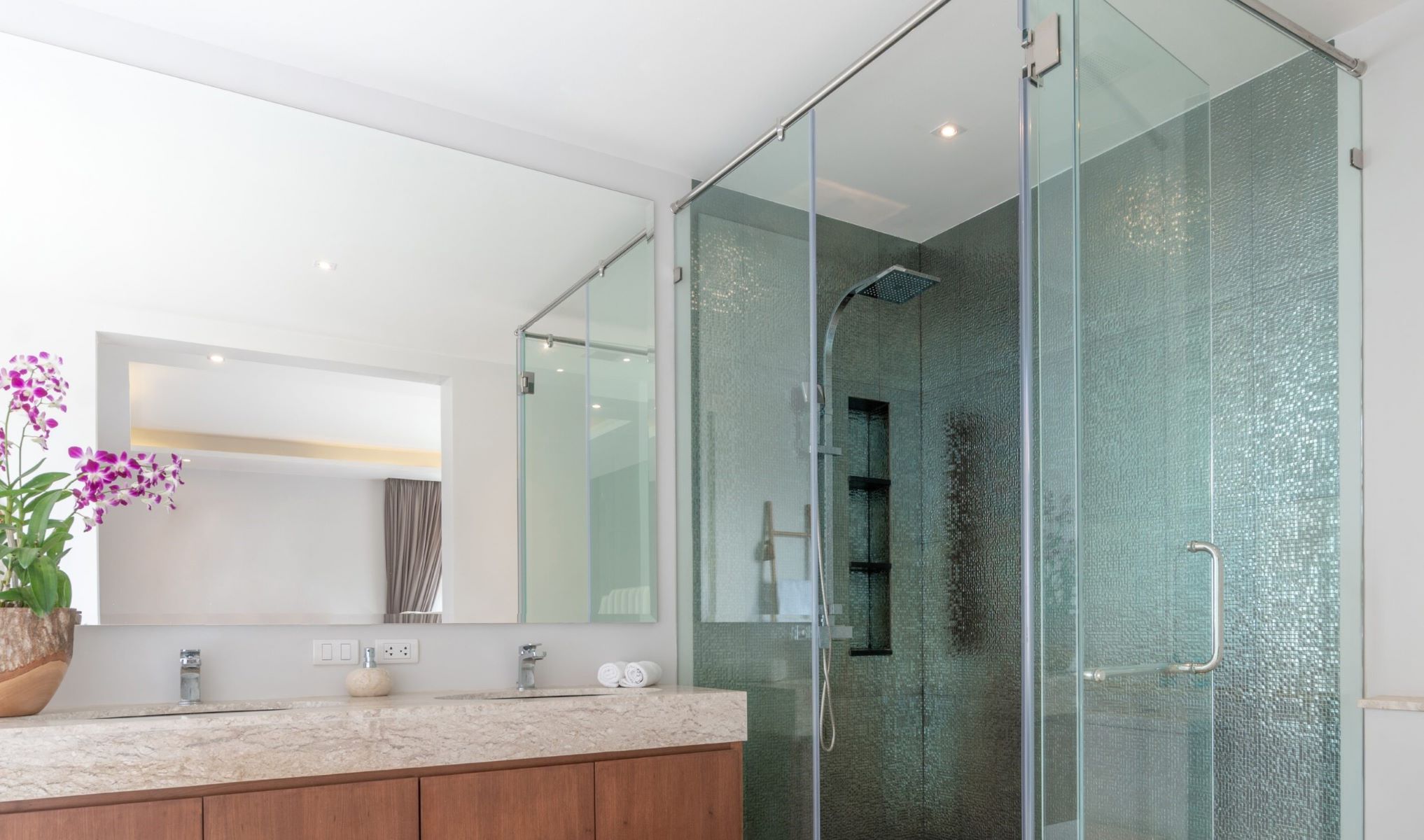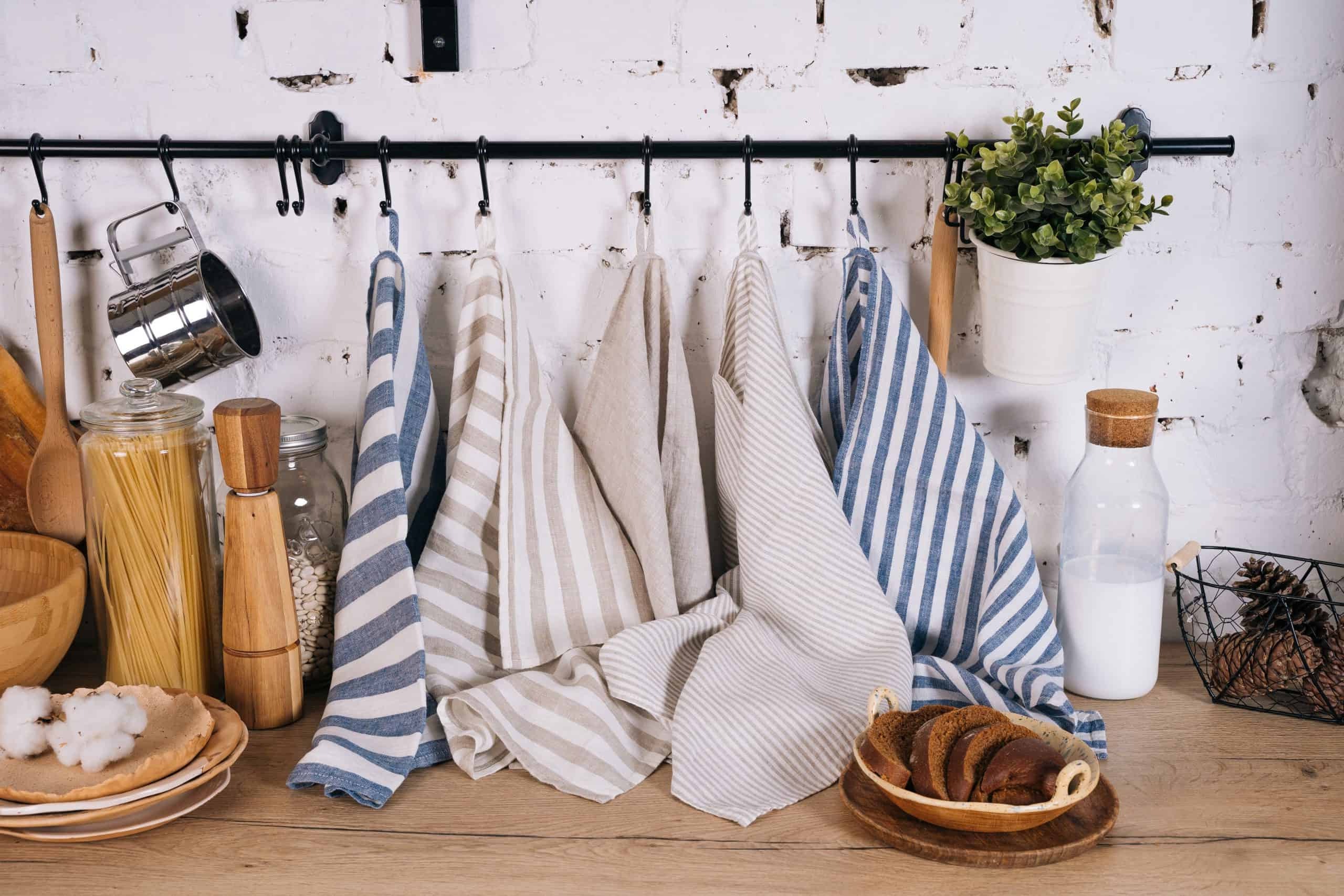Home>Create & Decorate>DIY & Crafts>How To Make Plantation Shutters


DIY & Crafts
How To Make Plantation Shutters
Published: April 26, 2024

Content Creator specializing in woodworking and interior transformations. Caegan's guides motivate readers to undertake their own projects, while his custom furniture adds a personal touch.
Learn how to make plantation shutters with our step-by-step DIY guide. Perfect for DIY & Crafts enthusiasts looking to add a personal touch to their home.
(Many of the links in this article redirect to a specific reviewed product. Your purchase of these products through affiliate links helps to generate commission for Twigandthistle.com, at no extra cost. Learn more)
Introduction
So, you've been thinking about upgrading your windows and adding a touch of elegance to your home. Plantation shutters are a timeless and stylish choice that can enhance the aesthetic appeal of any room. Not only do they provide privacy and control over natural light, but they also add value to your property. In this article, we'll guide you through the process of making your own plantation shutters. Whether you're a seasoned DIY enthusiast or a beginner looking for a rewarding project, with the right tools and a bit of patience, you can create custom plantation shutters that perfectly fit your windows and reflect your personal style. Let's dive in and get started on this exciting home improvement project!
Read more: How to Build DIY Wood Shutters
Materials Needed
To get started on making your own plantation shutters, you'll need to gather the following materials:
-
Wood: Select high-quality wood for the frame and louvers. Basswood is a popular choice due to its durability and smooth grain, but other options include cedar, pine, or composite materials.
-
Shutter Components: Purchase shutter components such as hinges, tilt rods, and louvers. These can be found at hardware stores or specialized suppliers.
-
Tools: Essential tools for this project include a saw, drill, measuring tape, sandpaper, wood glue, and a screwdriver. A miter saw is particularly useful for making precise angle cuts.
-
Finishing Supplies: You'll need paint or stain, as well as a sealant to protect the wood from moisture and sunlight.
-
Safety Equipment: Don't forget safety goggles, gloves, and a dust mask to protect yourself during the woodworking process.
-
Measuring Tools: A level, square, and pencil are crucial for accurate measurements and alignment during installation.
By ensuring you have all the necessary materials and tools at the outset, you'll be well-prepared to embark on this DIY journey to create your own stunning plantation shutters.
Measuring and Planning
Accurate measurements are crucial for ensuring that your plantation shutters fit perfectly within your window frame. Start by measuring the height and width of the window opening at three different points, and use the smallest measurement for both dimensions to ensure a proper fit. Take into account any obstructions such as window handles or locks that may affect the installation.
Next, plan the layout of your shutters, considering the number of panels you want and the desired louver size. This will help you determine the overall dimensions of each shutter and the spacing between the louvers. Additionally, decide whether you want your shutters to open from the center or to the side, as this will impact the configuration of the frame and hinges.
Once you have your measurements and layout planned out, it's a good idea to create a detailed diagram or sketch to visualize the final product. This will serve as a helpful reference throughout the construction process and ensure that you stay on track with your design. Taking the time to measure accurately and plan thoughtfully will set the stage for a successful and visually appealing installation of your custom plantation shutters.
Cutting the Wood
Now that you have your measurements and design plan in place, it's time to move on to the crucial step of cutting the wood for your plantation shutters. Follow these steps to ensure precision and accuracy in creating the individual components:
-
Prepare the Wood: Start by laying out the wood for the frame and louvers, ensuring that it is securely clamped or held in place. Use a pencil to mark the cutting lines based on your measurements and design specifications.
-
Use the Right Tools: A miter saw is highly recommended for making precise angle cuts, especially for the frame components. For the louvers, a table saw or a handheld circular saw with a guide can help achieve consistent and clean cuts.
-
Cutting the Frame: Begin by cutting the stiles and rails for the frame according to your measurements. Remember to double-check the dimensions before making any cuts to avoid errors. Pay close attention to the angles for the corners of the frame to ensure a seamless fit during assembly.
-
Cutting the Louvers: When cutting the louvers, it's important to maintain uniformity in size to achieve a professional look. Set up a stop block on your saw to ensure that each louver is cut to the exact length, minimizing variations.
-
Sand the Edges: After cutting the wood, use sandpaper to smooth out any rough edges and ensure a clean finish. This step is essential for both the frame and louvers, as it prepares the components for assembly and finishing.
By taking the time to cut the wood with precision and attention to detail, you'll be well on your way to creating custom plantation shutters that not only fit perfectly but also showcase the craftsmanship and care you've put into the project.
Assembling the Frame
With the individual components cut to size and prepared, it's time to assemble the frame for your plantation shutters. Follow these steps to ensure a sturdy and well-constructed frame:
-
Dry Fit the Components: Before applying any glue or fasteners, perform a dry fit of the frame pieces to ensure that they align correctly and form a square or rectangular shape. This step allows you to make any necessary adjustments before proceeding to the permanent assembly.
-
Apply Wood Glue: Once you're satisfied with the fit, apply wood glue to the ends of the stiles and rails. Use a small brush or a disposable applicator to spread the glue evenly, ensuring full coverage on the mating surfaces.
-
Assemble the Frame: Carefully join the frame components together, following the specific layout and design you've planned. Use clamps to hold the pieces in place while the glue sets, and check for squareness using a carpenter's square to ensure that the frame is perfectly aligned.
-
Reinforce with Fasteners: To add strength and stability to the frame, consider reinforcing the joints with brad nails or screws. Predrill pilot holes to prevent the wood from splitting, and then insert the fasteners at strategic points along the frame.
-
Check for Alignment: After the glue has dried and the fasteners are in place, double-check the alignment and squareness of the frame. Any minor adjustments can be made at this stage to ensure that the frame is perfectly balanced and ready for the next steps in the shutter construction process.
By following these steps, you'll be able to assemble a solid and precise frame for your plantation shutters, setting the stage for the addition of louvers and the finishing touches that will complete your custom window treatment.
Read more: DIY Barn Door Shutters Ideas
Adding Louvers
Now that the frame is assembled, it's time to add the louvers to your plantation shutters. This step requires precision and attention to detail to ensure that the louvers are evenly spaced and operate smoothly. Follow these steps to add the louvers to your custom shutters:
-
Mark the Louver Locations: Begin by marking the locations for the louvers on the inside of the frame. Use a measuring tape and pencil to create evenly spaced marks along the stiles, ensuring that the distance between each mark is consistent.
-
Create Louver Jig: To simplify the process of installing the louvers, consider creating a jig that will help you position them accurately. A louver jig can be made from a piece of scrap wood with evenly spaced holes drilled to match the louver spacing.
-
Drill Louver Holes: Use the louver jig as a guide to drill holes at the marked locations on the stiles. A drill press can help ensure that the holes are straight and uniform, allowing the louvers to pivot smoothly.
-
Insert Louvers: Once the holes are drilled, insert the louvers into the frame, ensuring that they fit snugly and align properly. Test the movement of the louvers to make sure they open and close without obstruction.
-
Secure Louvers: To secure the louvers in place, consider using louver pins or staples. These small fasteners can be inserted into the holes on the stiles, holding the louvers securely while still allowing them to pivot.
-
Test Operation: After securing the louvers, test the operation of the shutter to ensure that the louvers open and close smoothly. Make any necessary adjustments to the louvers or fasteners to achieve the desired functionality.
By following these steps, you'll be able to add the louvers to your plantation shutters with precision and care, creating a functional and visually appealing window treatment for your home.
Finishing Touches
Once the frame and louvers are in place, it's time to add the finishing touches to your custom plantation shutters. This step involves sanding, painting or staining, and applying a protective sealant to enhance the appearance and durability of the shutters. Follow these steps to complete the finishing touches with finesse:
-
Sand the Surfaces: Use fine-grit sandpaper to smooth the surfaces of the shutters, including the frame and louvers. Pay attention to any rough spots or imperfections, and aim to achieve a uniform and silky-smooth texture across the entire surface.
-
Apply Primer (Optional): If you plan to paint your shutters, applying a primer can help the paint adhere better and provide a more even finish. Choose a high-quality wood primer and apply it according to the manufacturer's instructions, allowing sufficient drying time before proceeding to the next step.
-
Paint or Stain: Whether you opt for a fresh coat of paint or a rich stain, this is your opportunity to customize the appearance of your shutters to complement your interior decor. Use a paintbrush or sprayer to apply an even coat of paint or stain, ensuring full coverage and smooth application.
-
Seal the Wood: To protect the wood from moisture, sunlight, and general wear and tear, it's essential to apply a sealant. Choose a clear polyurethane or varnish that is suitable for the type of wood you've used, and apply multiple thin coats for optimal protection and a glossy finish.
-
Reattach Hardware: If you removed any hardware components such as hinges or tilt rods during the finishing process, now is the time to reattach them to the shutters. Ensure that all hardware is securely fastened and functions smoothly before proceeding to the installation.
-
Final Inspection: Once the finishing touches are complete, take a moment to inspect the shutters for any touch-ups or blemishes. Address any areas that may require additional attention, and make sure that the overall appearance meets your expectations.
By following these steps, you'll be able to add the perfect finishing touches to your custom plantation shutters, elevating them from a functional window treatment to a stunning focal point in your home.
Conclusion
Congratulations on completing the process of making your own plantation shutters! By following the steps outlined in this guide, you've embarked on a rewarding DIY journey that has allowed you to create custom window treatments tailored to your preferences and the specific dimensions of your windows. From measuring and cutting the wood to assembling the frame, adding louvers, and applying the finishing touches, you've demonstrated skill and dedication in crafting a timeless and elegant addition to your home.
As you prepare to install your custom plantation shutters, take pride in the craftsmanship and attention to detail that have gone into this project. Whether you've chosen to paint them in a vibrant hue or showcase the natural beauty of the wood with a rich stain, your shutters are a reflection of your personal style and a testament to your DIY prowess.
As you admire the finished result and enjoy the enhanced ambiance and functionality that your plantation shutters bring to your living space, remember that the satisfaction of creating something with your own hands is an invaluable reward. Embrace the compliments from friends and family as they admire your handiwork, and take pride in the fact that you've added value and character to your home through this fulfilling home improvement project.
Now, as you bask in the beauty of your newly installed plantation shutters, you can look back on this experience with a sense of accomplishment and the knowledge that you have the skills and creativity to tackle future DIY endeavors with confidence. Whether it's a new woodworking project or another home improvement task, the journey of creating your own plantation shutters has equipped you with the expertise and inspiration to continue enhancing your living space with personalized, handmade touches.

